|
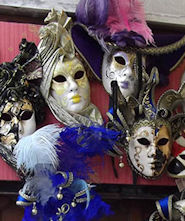 Dwight Peck's personal website Dwight Peck's personal website
Venice
street scenes, 2010
Oh,
and the Lido, and Chioggia. And Torcello.
We
wanted to go to Venice again. Paintings, history, decaying architecture,
etc. But we can't afford it anymore. So we went to the Lido.
You
may not find this terribly rewarding unless you're included here, so this
is a good time for casual and random browsers to turn back before they
get too caught up in the sweep and majesty of the proceedings and can't
let go.
It's San Giorgio Maggiore on the card for today, and Sebastiano Ricci

Self-portrait
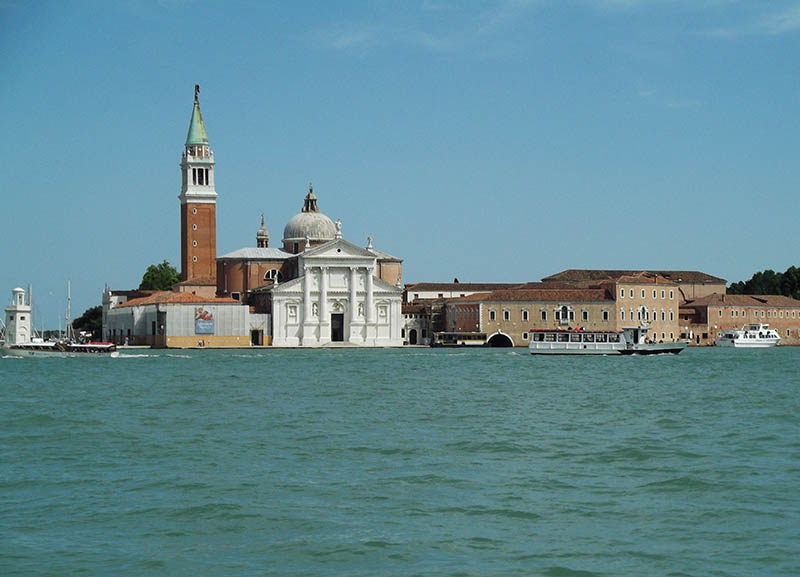
We're approaching San Giorgio Maggiore, a compact little island just across from San Marco, most of it useless for us tourists. The Doge gave it to a monk named Giovanni in 982, and his Benedictine co-conspirators drained the wetlands to make their monkish hideout.
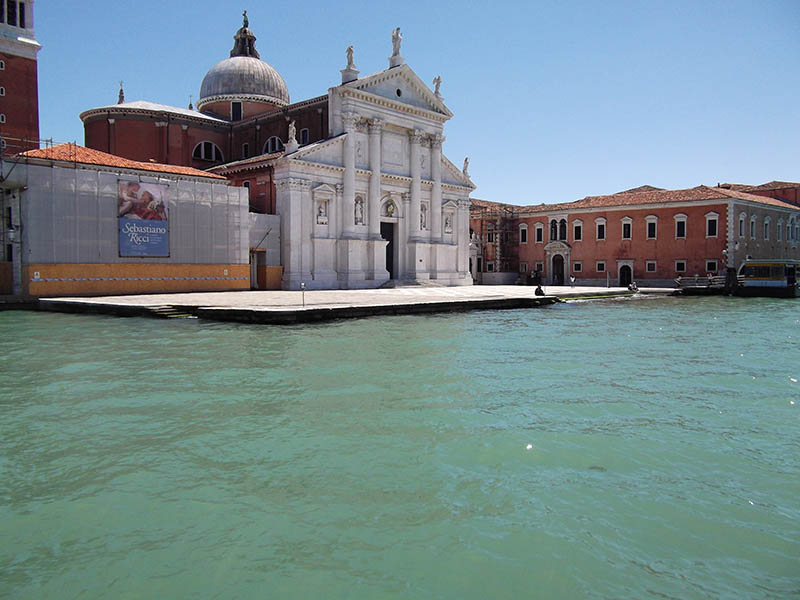
The present church is by Palladio, however, begun in 1566 and worth our time.
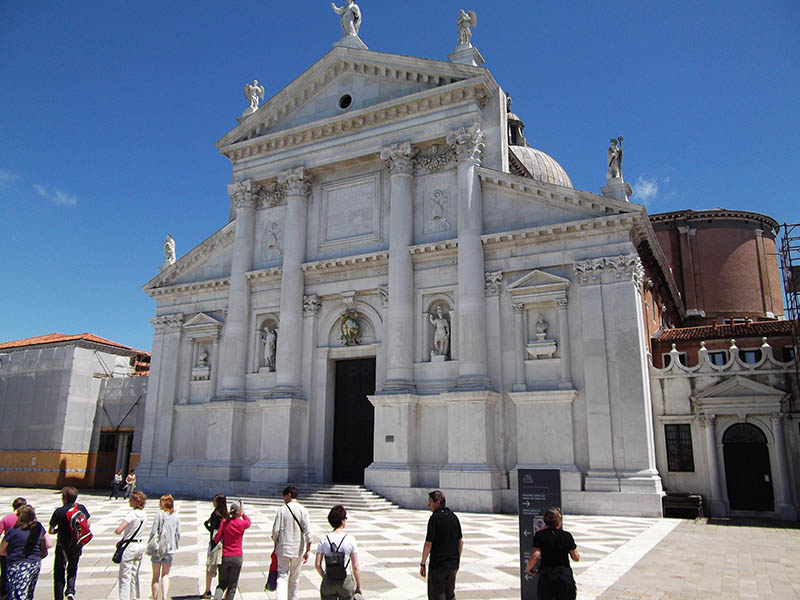
Mainly, however, we're here to see the Sebastiano Ricci exhibition held round by the back door.
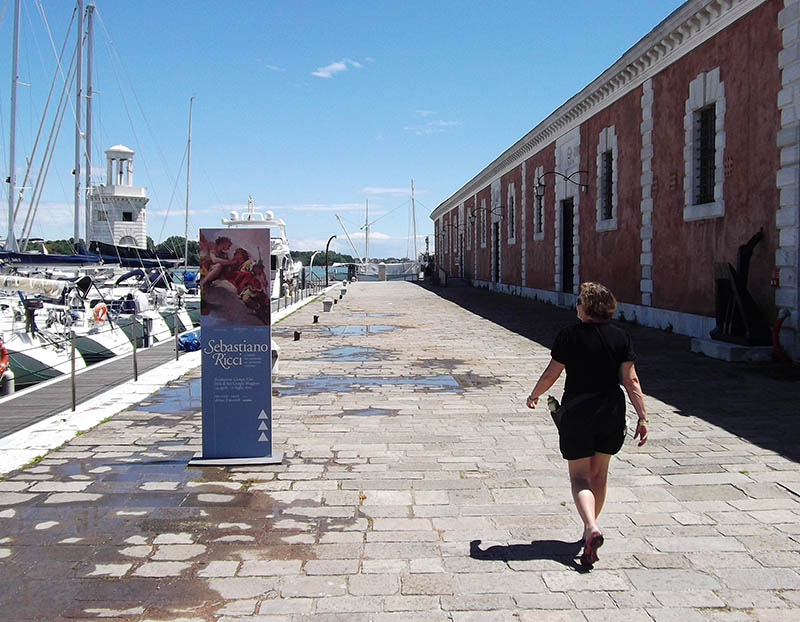
The Cini Foundation arts centre is rentable, and here's where we'll find this excellent interpretive exhibition of the works of Venetian artist Sebastiano Ricci (1659-1734) and his context. The collection, the presentation, and the analyses are great, though perhaps way overstated. Especially about how he anticipated Antoine Watteau. He definitely excelled at big ceiling pictures in bottom-up perspective -- which is not always the best angle.

St Mark's from San Giorgio
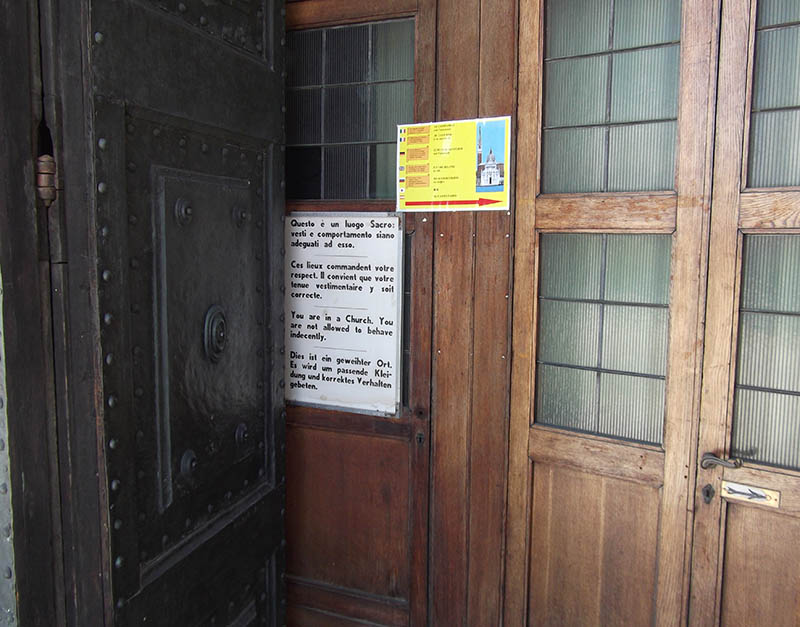
"You are not allowed to behave indecently". How seldom we hear these words nowadays!
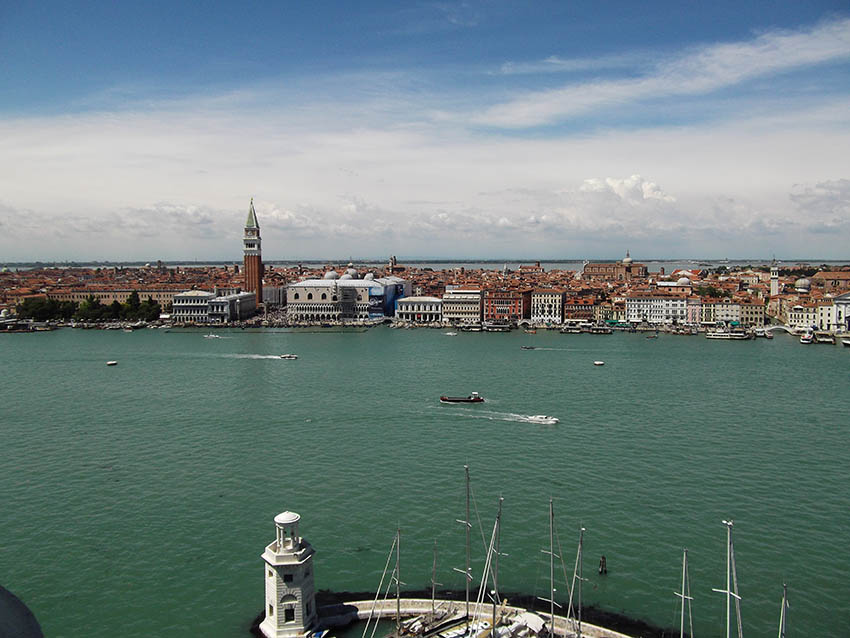
St Mark's from the top of the bell tower of San Giorgio (elevator!)

More of downtown Venezia -- that's the church of Giovanni and Paolo in the centre, and the Riva degli Schiavoni along the front.
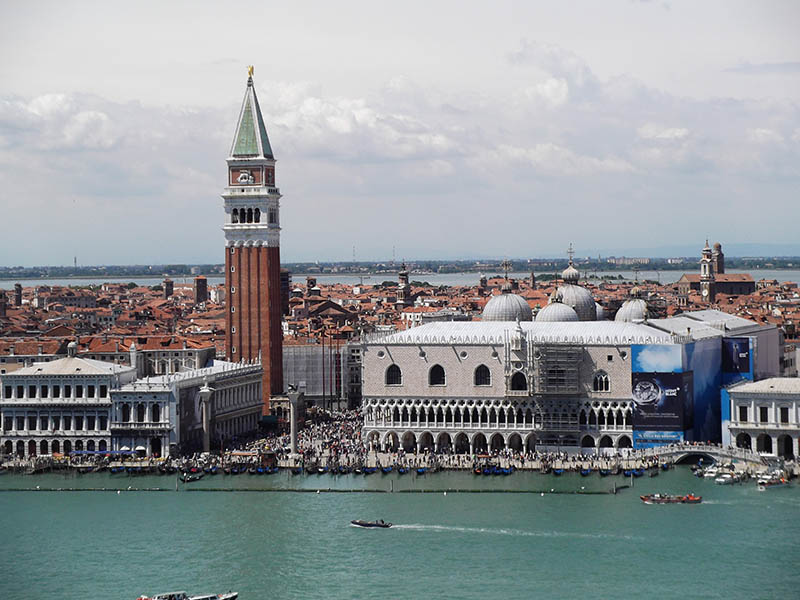
Fujizoom view of San Marco and the Doge's Palace

Another bell-tower view. We're just swivelling left-to-right at this point, trying to get it all in case we never get to come back.

The Arsenal and Castello district -- the Saudi guy's world's 45th biggest yacht, and the Biennale Gardens and St Elena's on the right. The incredible sculpture of the Partigiana is indiscernible on the shoreline to the right, but more on that tomorrow.

Our home away from home, the Lido, the ferry dock just to the right of the domed thing and our Villa Ines probably just in front of that Adriatic beach hotel looming right of centre.
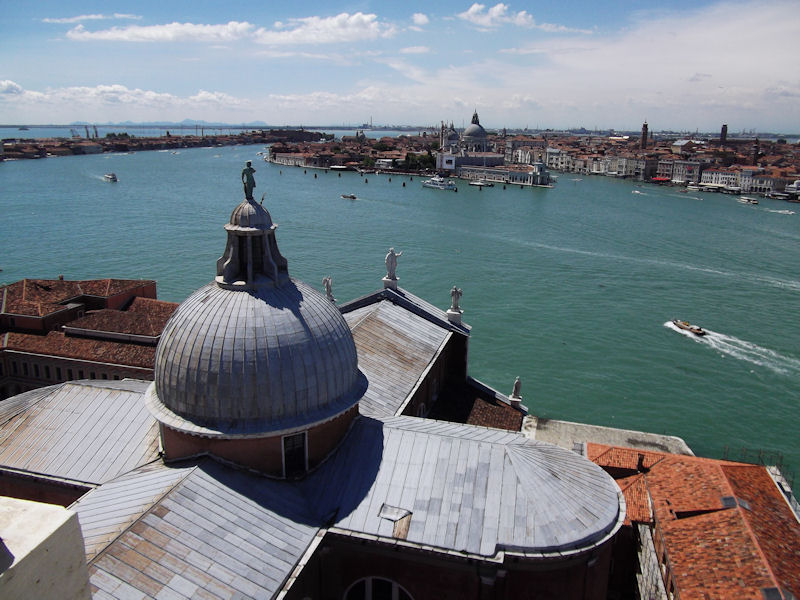
The Canale della Giudecca (left) and the Grand Canal (right) from San Giorgio's convenient bell tower
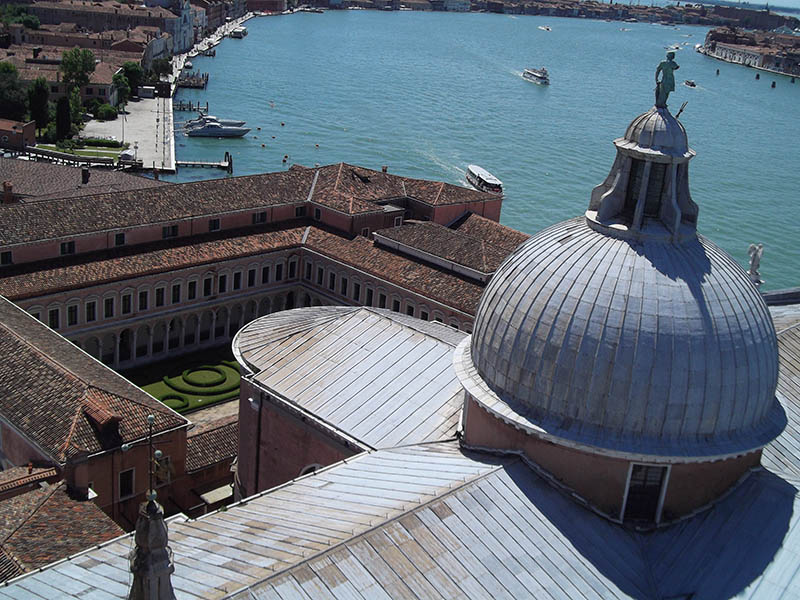
Attractive parts of San Giorgio where, I suppose, only the Benedictinies get to go.
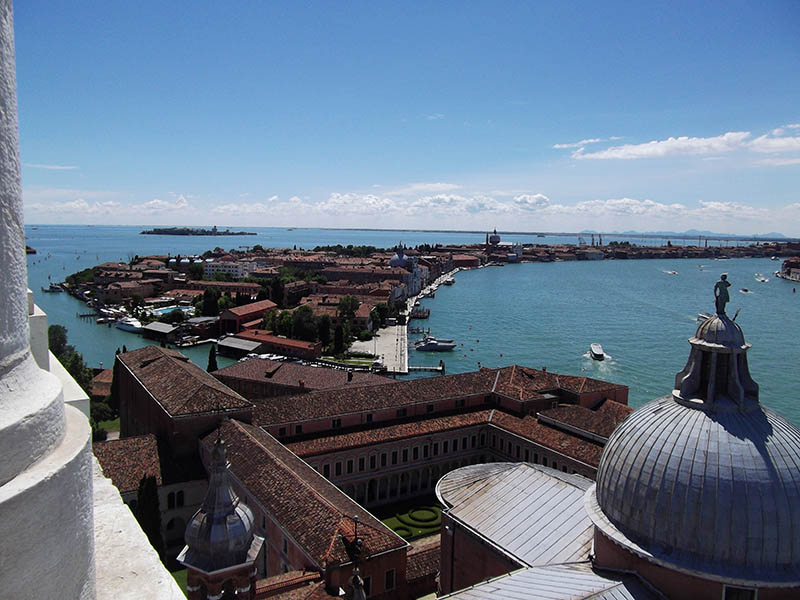
Giudecca and lots more Venice Lagoon behind it. The name Giudecca tries to indicate that the Jews lived here, but the old Jewish ghetto is way over in the Cannaregio district near the train station, and no Jews are part of the history here, unless perhaps the Israelis have recently annexed it. It was residentially palatial, then industrial, and now up-scale residential again.
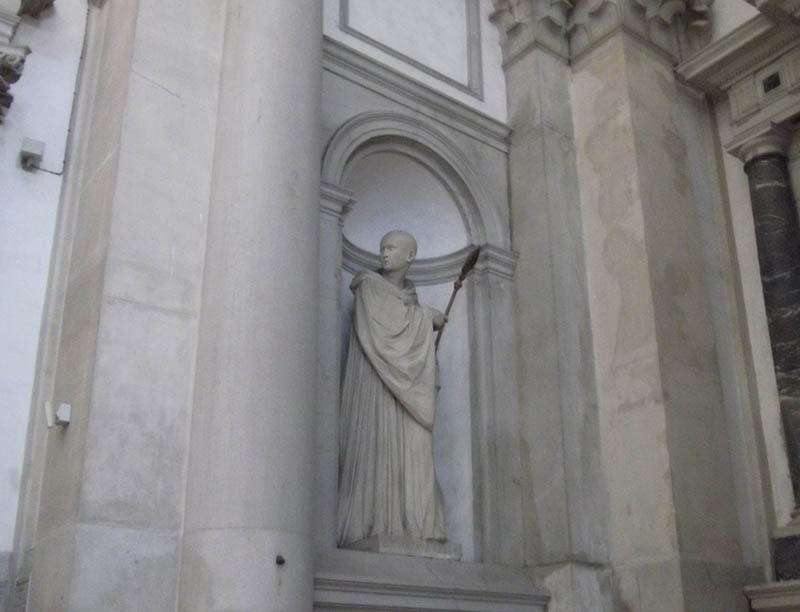
The patron saint of chemotherapy

We're back at the ferrovia, the S. Lucia rail station, trying again to book something out of here at the end of the week. The Swiss computers seem still to be down!
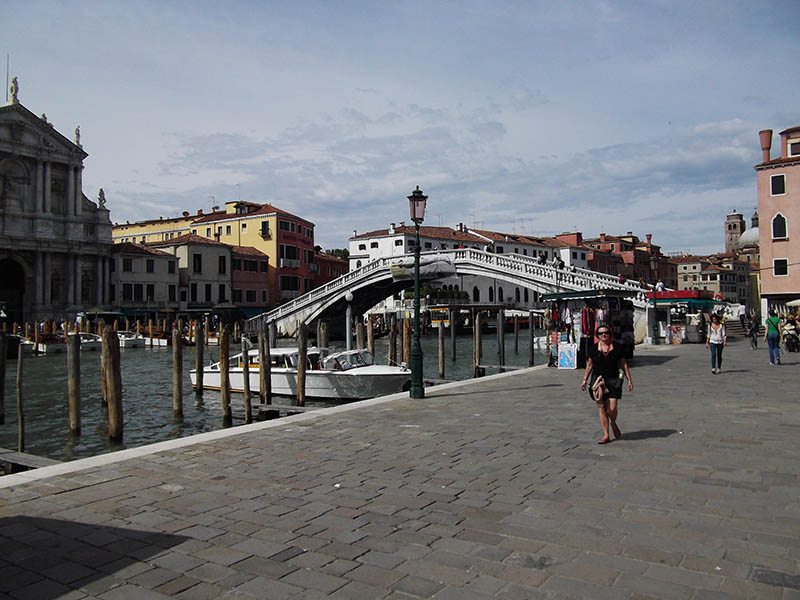
Across the train station bridge, we're going to wander down through the San Polo district to see what's to be seen.
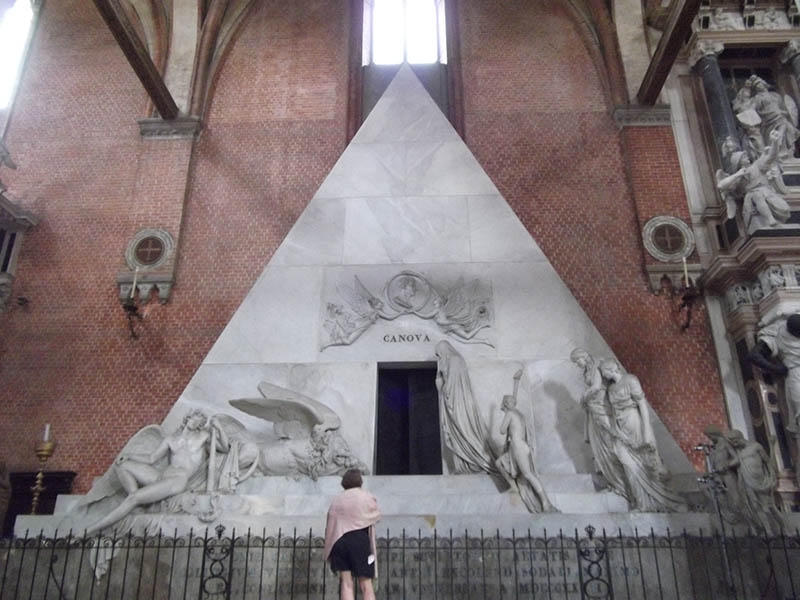
Good grief! The sculptor Antonio Canova did great stuff, early 19th century, love the nudes!, but he seems to have specialized in people's monumental tombs. This self-gratulatory piece of work, in the Basilica of Santa Maria Gloriosa dei Frari, Canova evidently meant to be for Titian's mausoleum, but he got his own name on it in the end (and his heart's in it, literally). (Canova's George Washington is in the North Carolina capitol building (ummm, copy).)
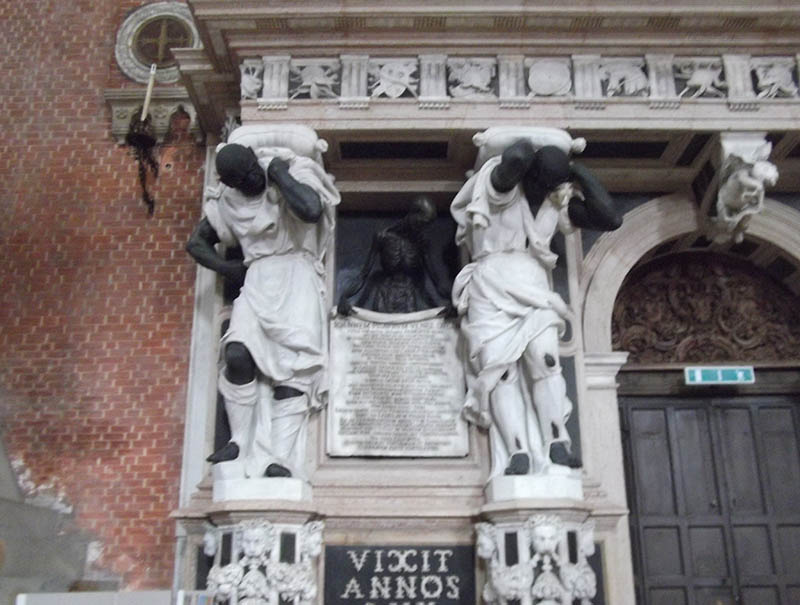
The Black Man's Burden. They're holding up a big piece of the side wall, and they hate it.

Where to now?

Venetian kid doing laps around the only tree he's ever seen.
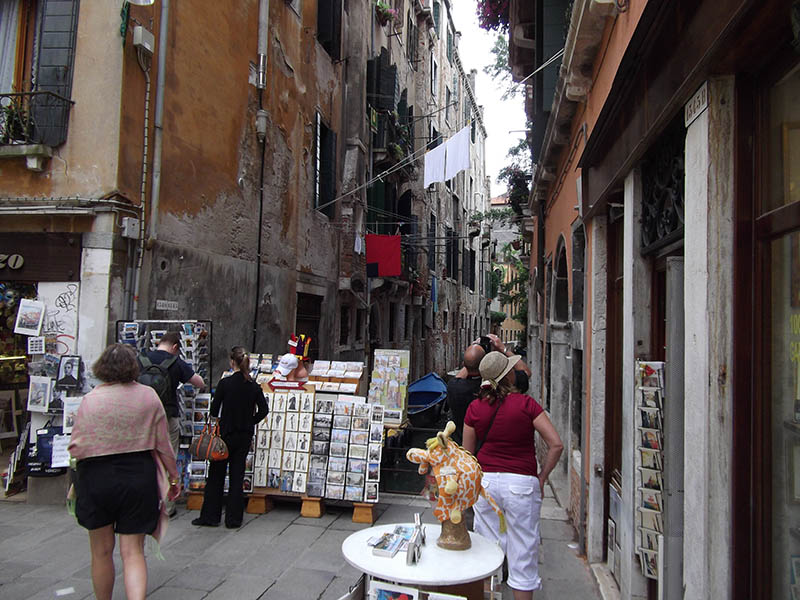
Street scene

The guy on the phone is trying to reserve a table, but the waiter's cell is turned off. What happens now?

Kristin and the Rialto Bridge. The Rialto district ('rive altus', the high bank) was developed in the 9th century but leapt into history in 1097, when the city's main market moved here. There was a pontoon bridge here from 1181, but a wooden bridge was put in and, over the years, collapsed twice when people crowded on top to watch the boat races (1444 and 1524), not unlike British football stadiums. The present edifice was built in 1591 (designed by Antonio da Ponte, 'Tony the Bridge Guy') and looks fairly sturdy.
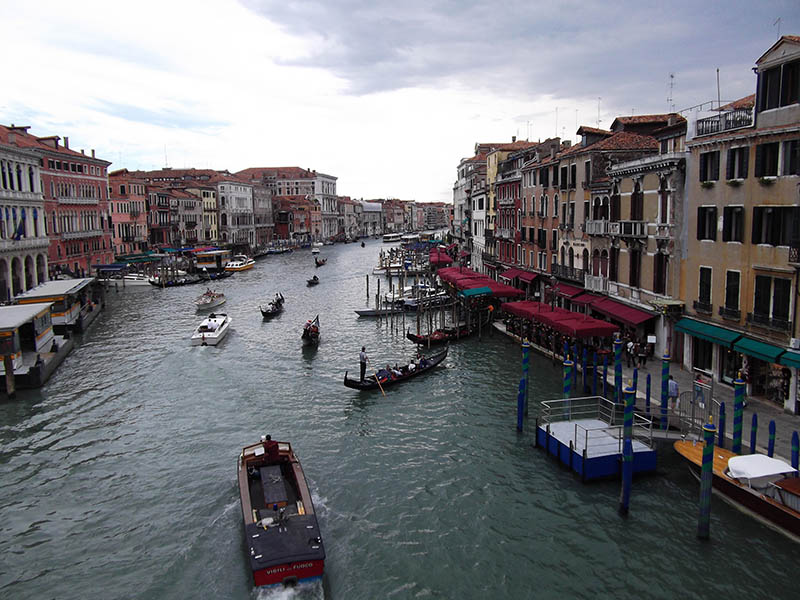
The Grand Canal from the Rialto Bridge. This was for long the only bridge across the Canal. I speak with authority here because I'm re-reading John Julius Norwich's magisterial A History of Venice (1983).

Tourist shops on the Rialto Bridge. Leftovers from Carnevale.
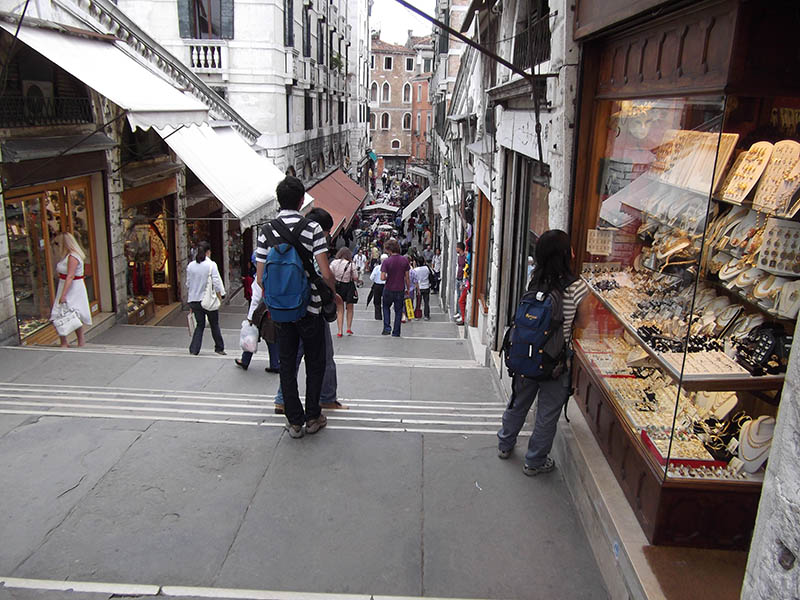
The view down off the bridge with the shops on both sides of it.
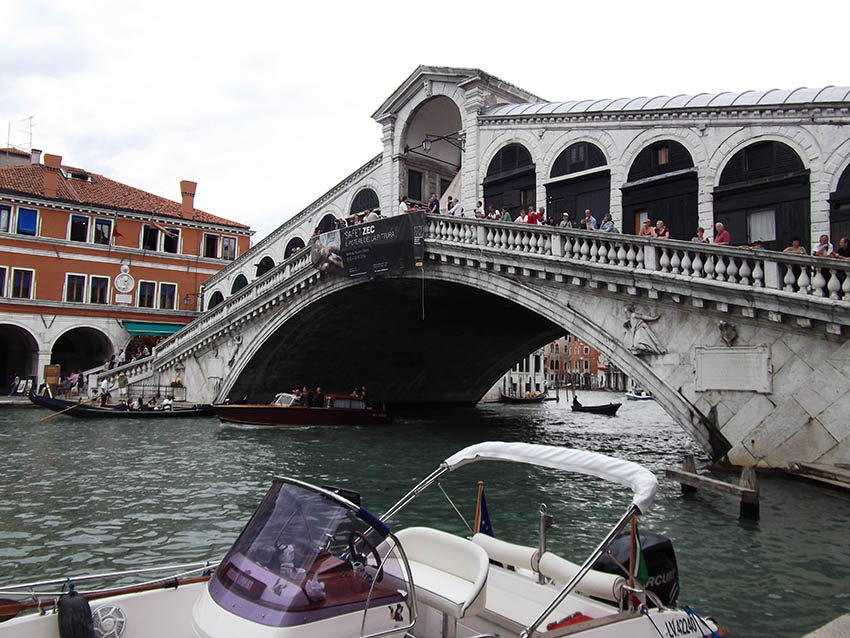
Rialto Bridge

The Hotel Marconi - an "iconic" photo for us. "Within an inviting atmosphere of Old-World ease and charm, guests can enjoy a hot buffet in the sunny breakfast room or relax in the waterfront bar along the Grand Canal (source)." All well and good, but what's it got to do with Marconi?
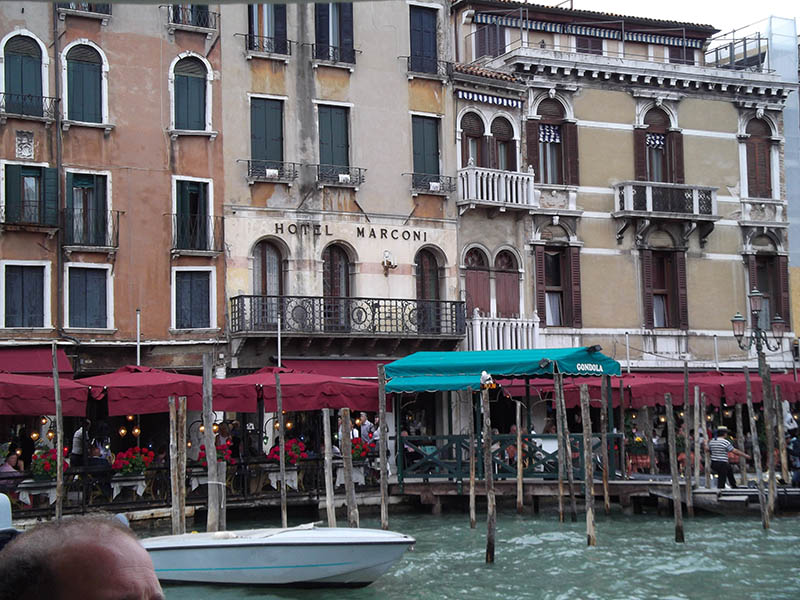
We've been peak-bagging Marconi radio sites in Newfoundland, Rathlin Island in Northern Ireland, in Cornwall, and concerned tourists want to know! Marconi slept here, or what?
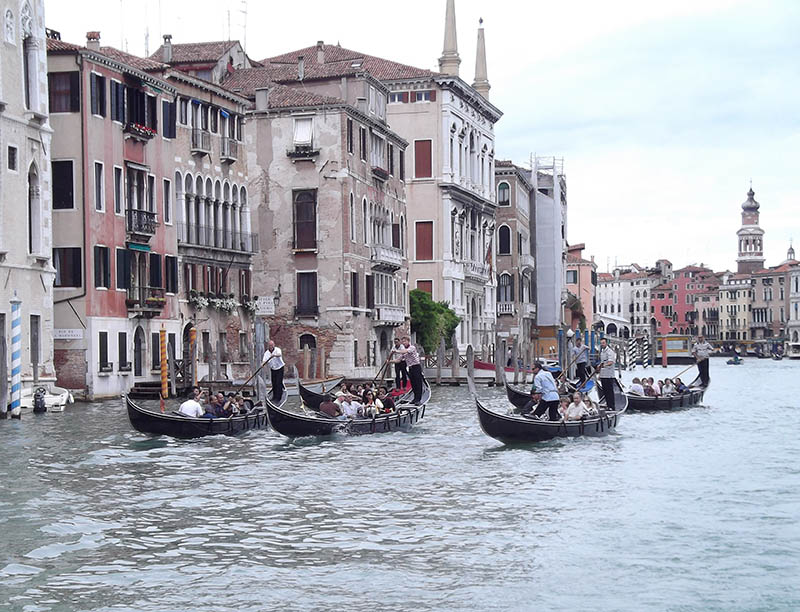
Another gondola convoy, with two accordions, but everyone singing along to the same song.

Modern art

Another convoy. More accordions. Everyone's very happy, and singing along to the accordions.
Venice, etc., in 2010

 Feedback
and suggestions are welcome if positive, resented if negative, Feedback
and suggestions are welcome if positive, resented if negative,  .
All rights reserved, all wrongs avenged. Posted 25 May 2010, revised 17 October 2013. .
All rights reserved, all wrongs avenged. Posted 25 May 2010, revised 17 October 2013.
|
 Dwight Peck's personal website
Dwight Peck's personal website

































